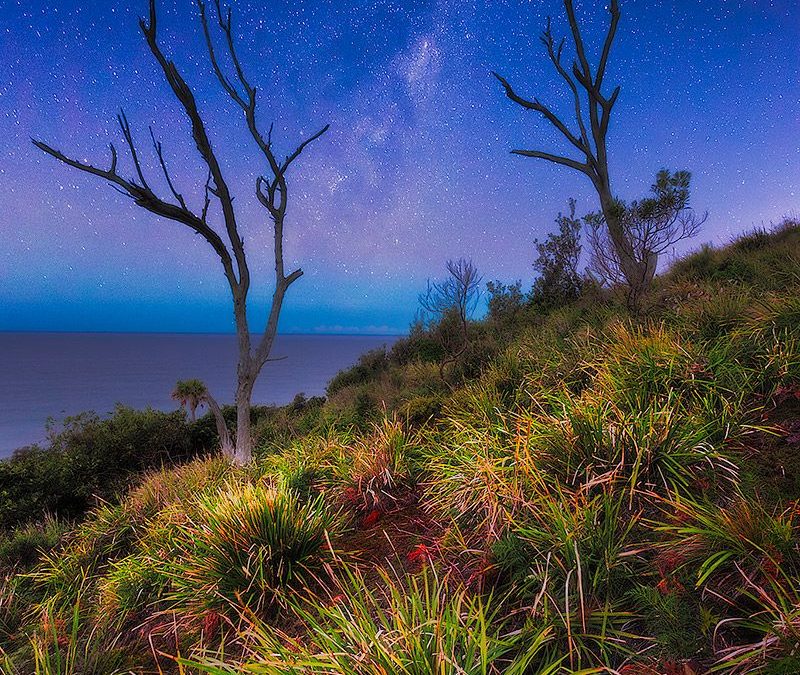Thought I’d share this shot with you today, it was a little bit of an experiment.
This particular location can only be (conveniently) reached at sunset during a short 2-3 week window per year in between the clocks changing for daylight savings, and the sunset naturally moving beyond the time the rangers close the access gates.
Otherwise, it’s about an hours walk downhill from the gate, and a much longer walk uphill back to the car.
I always seem to miss the window, but luckily, this time my mate Mike called me up earlier that day to tell me the times are just right, the sky will be clear and the milky way will be nicely positioned over the horizon.
So we headed down there to give it a shot!
We arrived an hour or so before sunset, but using the “star walk” app on my phone I was able to see exactly where the milky way would appear once it got dark.
This allowed me to pick a composition during daylight and try a little experiment.
The first exposure for the foreground, I took before the sun went down.
Then I waited… I don’t remember how long for, but in the region of 1 to 2 hours, until it got dark.
Then I took a second exposure of the dark sky in which the milky way was (faintly) visible.
(If we had more time to shoot into the night, the milky way would have been more visible, but we’d have had to sleep in the car the wrong side of the gate if we’d stayed any longer!)
Then armed with the two exposures taken a couple of hours apart, I created this final image in Photoshop.
I didn’t have to change my workflow all that much (if any).
Even though it’s a bit of a “fantasy shot”, the idea of blending the sky and foreground together was the same as always, except it was the foreground that was the brightest element this time rather than the sky.
The thing about this shot is, without the earlier daytime exposure for the foreground it would have been very difficult to get the same level of detail.
For one, the moon wasn’t out. When it is and you do a long exposure, it’s surprising how much it can light a foreground. But the downside is a bright moon can affect the visibility of the milky way.
Secondly, an exposure long enough to capture enough light in this foreground at night (even with a bright moon) would have resulted in the bushes appearing blurred due to the wind.
So really the only way to get this shot was to shoot the foreground before and the sky after sunset.
I guess all of this would qualify the image as “fake” (lol) but that doesn’t bother me. It’s all just a bit of fun and it was an interesting experiment.
Something to keep in mind next time you’re thinking to shoot the night sky.
If you do give it a go and want the best way to blend multiple exposures in PS, then knowing these important techniques will be critical (click here).
Talk soon
Steve


